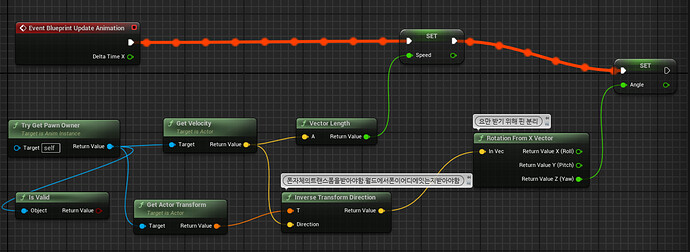That is correct! To break down why:
If TryGetPawnOwner does not return an object reference to the owning pawn, then we cannot get it’s velocity, which is returned as a zero vector (a vector with XYZ coordinates of (0, 0, 0)), then vector length return a value of 0. So Speed is set to 0.
Likewise, since there is no object reference to the owning pawn. GetActorTransform returns a transform with its values set to 0, and since the transform is zero and the result from GetVelocity is a zero vector InverseTransformDirection also returns a zero vector. Then RotationFromXVector also returns 0 because it’s being supplied a zero vector, which then sets Angle to 0.



